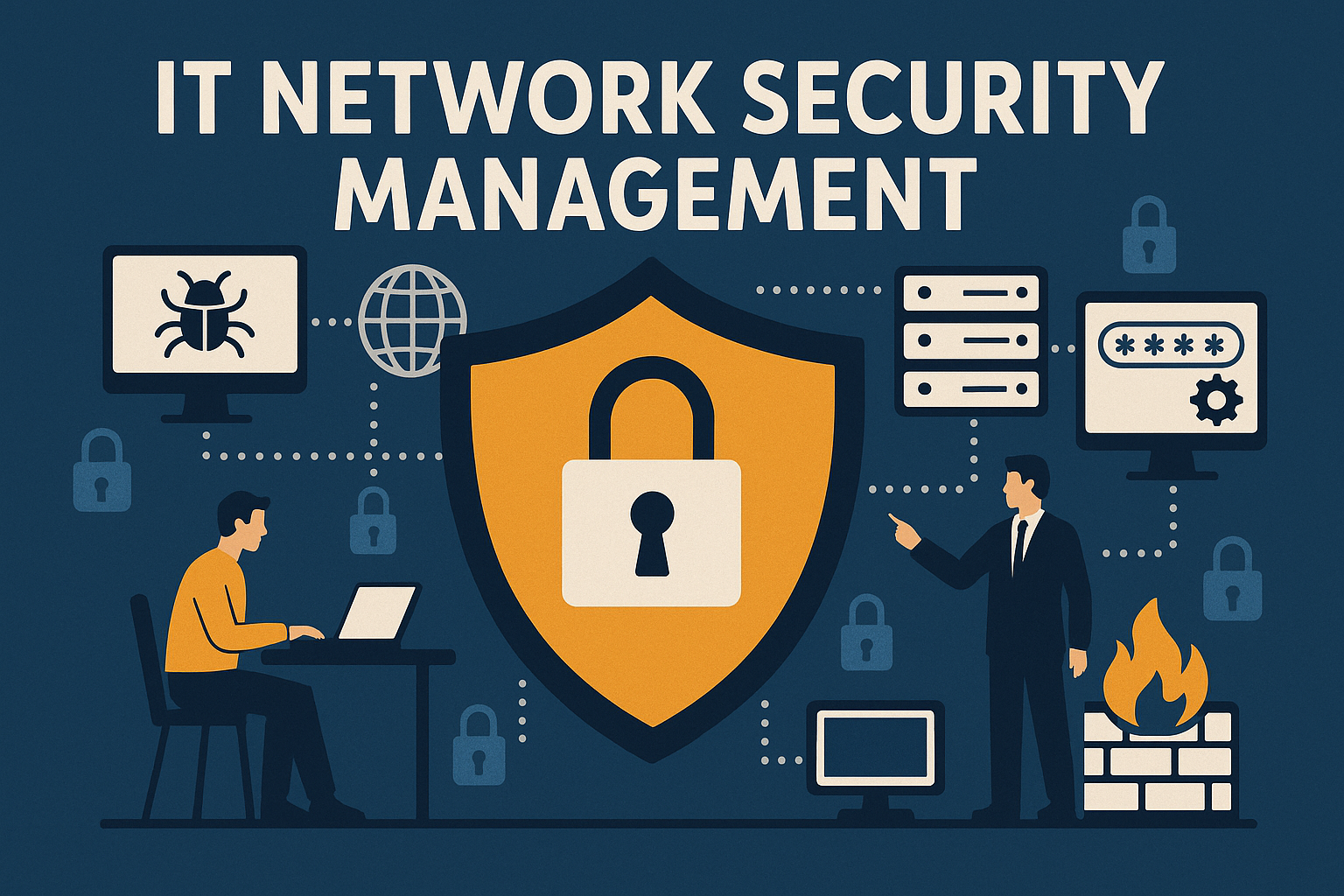
Understanding IT network security management
IT Network Security Management is a critical process for protecting an organization’s computer networks and digital assets from unauthorized access, misuse, modification, or denial of service. It involves implementing a comprehensive strategy that integrates technology, policies, and operational processes to ensure the confidentiality, integrity, and availability (CIA triad) of the network infrastructure.
Why is IT network security management important?
Effective IT Network Security Management is essential for several reasons. Firstly, it safeguards sensitive information from cyber threats such as theft or loss, ensuring data protection. Secondly, it minimizes downtime and disruptions caused by security incidents, thereby ensuring business continuity. Additionally, it helps meet regulatory requirements for data protection and network security, which is crucial for compliance.
Investing in IT services in Miami gives businesses a competitive edge by ensuring their technology is always running at its best.
Providers of IT services in Miami don’t just repair technical problems—they predict and prevent them before they disrupt your workflow.
With around-the-clock monitoring, they keep a close eye on systems to catch issues early.
Preventative maintenance ensures your infrastructure remains stable and secure year-round.
When unexpected challenges arise, fast-response support minimizes downtime and protects productivity.
By choosing trusted IT services in Miami, companies can operate with confidence and focus on growth.
Key Components of IT Network Security Management
IT Network Security Management encompasses various components and best practices to ensure robust security. These include:
Intrusion detection/prevention systems (IDS/IPS)
These systems monitor network traffic for suspicious activity, alerting security teams or actively blocking/mitigating threats.
Access control
Ensures only authorized individuals can access specific network resources, often utilizing measures like strong passwords and multi-factor authentication (MFA).
Encryption
Converts data into a coded format, making it unreadable to unauthorized users during transmission or storage.
Network monitoring
Continuous surveillance of network activity to detect anomalies, potential threats, or policy violations.
Security policies
Define rules and procedures for accessing and using network resources, including incident response plans and employee guidelines.
Data loss prevention (DLP)
Monitors network traffic to detect and prevent unauthorized transfer or copying of sensitive data.
Best practices for IT network security management
To enhance IT Network Security Management, organizations should adopt a layered security approach, implementing multiple security measures (e.g., firewalls, IDS/IPS, encryption, access control) to provide redundancy and strengthen defenses. Regular policy updates are essential to address evolving threats and vulnerabilities. Continuous network monitoring using tools like SIEM systems for real-time threat detection and response is also crucial.
Employee training on cybersecurity best practices, including recognizing phishing attacks and using strong passwords, helps in building a security-aware workforce. Lastly, having a well-defined incident response plan ensures a swift and effective response to security breaches.

FAQs it network security management
What is network security management?
Network security management is a comprehensive approach to protecting an organization’s network infrastructure from unauthorized access, misuse, modification, or disruption. It involves the implementation of various security measures, policies, and technologies to ensure the confidentiality, integrity, and availability of the network and its data.
What is secure network management?
Secure network management refers to the practices and tools used to ensure that a network is protected against security threats while maintaining its functionality and performance. This involves the implementation of robust security policies, the use of advanced security technologies, and the continuous monitoring and management of network activities.
What are the five major components of IT security management?
The five major components of IT security management form the foundation for a comprehensive security strategy. These components include: Access control, threat detection and prevention, data protection, security policies and procedures, security awareness and training.
What are the 5 network management?
The five key areas of network management, often referred to as the FCAPS model, encompass the essential functions required to effectively manage and maintain a network:
1. Fault Management
2. Configuration Management
3. Accounting Management
4. Performance Management
5. Security Management